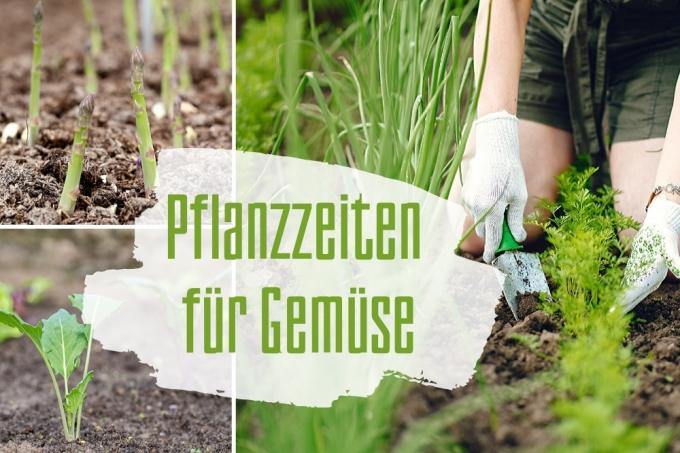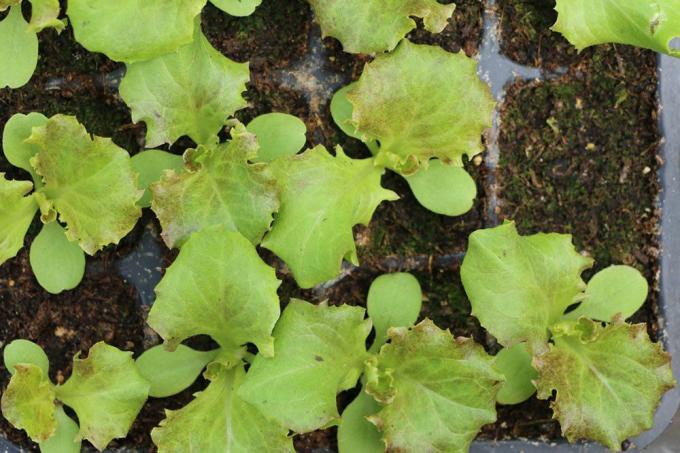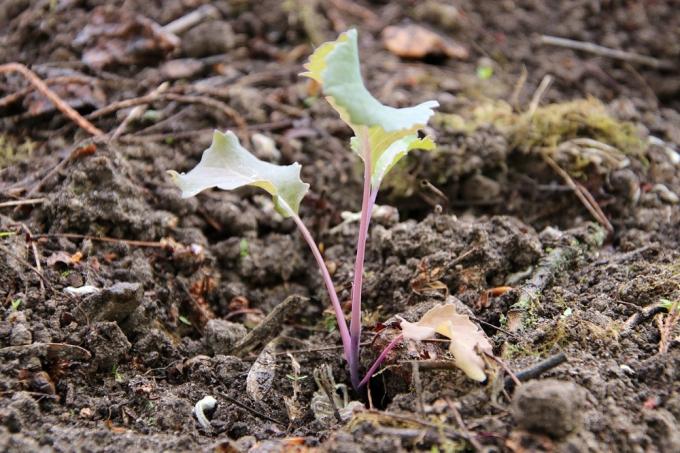
table of contents
- February
- March
- April
- May
- June
- July
- August
The year of planting vegetables extends from February to August. In regions with harsh weather conditions, you should adapt the planting times to the weather, or planting in the greenhouse.
February
This month, the first plantings are possible both in the greenhouse and cold frame as well as outdoors. The greenhouse offers optimal possibilities, since no ground frost is to be expected here. If necessary, you must also irradiate the plants with light. A rain barrel does a great job in the greenhouse so that you can water your vegetables adequately. Planting outdoors is usually possible from the end of February, although this date can be postponed depending on the region. Pay attention to the soil in the vegetable patch. As soon as the surface has dried and is no longer smearing, you can start planting. These vegetables are suitable for late winter planting:

- Leeks that were brought forward in January can be planted out at the end of February
- Black salsify is at risk of late frost and feels good in the greenhouse
- Put the kohlrabi and radish in a frost-free but unheated greenhouse
- Lettuce and iceberg lettuce can be harvested in the cool greenhouse by April
- Plant onion and pearl onions, shallots and garlic from the end of February
March
Resistant and robust vegetables can be planted out early in the year. Light frosts do not cause any problems for the crops. However, you will achieve better yields if you cultivate the plants in the greenhouse or protect outdoor beds with foil. The covers remain on the bed until mid-May. As soon as the young plants are about 15 centimeters high, remove the fleece and pile up soil around the base of the stem. These vegetables can be planted in March:

- Young plants of early cabbage, Jerusalem artichoke, lettuce or beans are planted outdoors
- last planting time for rhubarbwhich is ready for harvest in April
- Put the preferred savoy cabbage in the cold frame
- Pre-germinate new potatoes in egg cartons at twelve to 15 degrees
Tip: March is ideal for sowing beetroot, spinach, chicory, carrots and onions in the garden. Seeds of frost-resistant radishes are mixed with parsnips and sprinkled directly into the field.
April
The growing season in the field has started. However, there is still a risk of late frosts, which can harm delicate vegetables. In general, seedlings tolerate transplanting better if they have a well-developed root ball with soil. Bale-free seedlings should be planted in the ground in the evening or on rainy and overcast days so that they can grow better. This way you also prevent plant shock. These vegetables are ready to be planted in April:

- Plant pre-germinated new potatoes directly in the field in mid-April
- Plant green asparagus in rows directly in the bed
- Plant early-ripening kohlrabi at a sufficient distance, as this will ripen faster
- Plant the Swiss chard in rows with a generous spacing
- Plant out cabbage, broccoli, lettuce and grown peas towards the end of April
- Put the beetroot sprouts outdoors and cover with fleece
- Little plants of robust Varieties of tomatoes put in an unheated greenhouse
May
Until the middle of the month, the temperatures can still drop into the minus range, which is why you should only plant non-frost-resistant vegetables later in the month. After the 15th By May, the risk of late frosts is mostly over, so sensitive vegetables can also be planted outdoors. In harsh locations, wait until the end of the month for varieties that need warmth to come outside. These plantings are now possible:

- Celery moves outdoors as soon as there are no more night frosts
- Pumpkin and bell pepper plants that have been grown in advance come into the bed after the ice saints
- Refined cucumber plants are allowed in the unheated greenhouse from the beginning of the month
Tip: After the soil has warmed up enough, you can sow chicory seeds in the bed. Parsnips are also planted in rough locations from mid-May.
June
This month, late vegetables are planted for harvest in the fall. In addition, plants that are particularly warmth-loving can be outdoors. However, you should not lose sight of the weather report, because in Central Europe young plants can be affected by the sheep cold in mid-June. This entry of cold air is mostly accompanied by inconsistent and rainy weather. Therefore, cover young plants with foil or fleece if necessary. Your planting plan looks like this:

- ideal planting time for all salads such as endive, lettuce and iceberg lettuce as well as lettuce
- Kale, cauliflower, broccoli and kohlrabi migrate outdoors
- Young plants of autumn leek, celery and fennel want to get some fresh air
- Preferred snake cucumbers now feel good in the bed
Tip: Pick lettuce and lamb's lettuce can still be sown directly because they are ready to be harvested within a few weeks. Now is still a good time to sow late varieties of carrots.
July
The first beds that were planted with seeds in spring have been harvested and meanwhile offer space for fresh plantings. Numerous early young plants can now go outdoors if you could not attend an earlier planting date. Thoroughly loosen up harvested beds and provide them with horn shavings. Note that the intensity of the sun increases and the seedlings dry out faster in direct sunlight. A sufficient water supply is just as important as the shade in the blazing midday sun. This vegetable can be planted in July:

- Early endive salad, which is to be harvested in October, goes outdoors
- Plant young lamb's lettuce eight by eight centimeters apart
- Broccoli, kohlrabi and cauliflower can still be planted
- Winter leek migrates into the bed
August
It's time to prepare for the late fall and winter harvests. The growth of vegetable plants slowly declines, so you should only put fast-growing or frost-resistant varieties in the open air. In the greenhouse you have even more space and can plant vegetables that should be moved outside in July at the latest. This overview shows you which plantings are possible in August:

- Endive can be planted in the unheated greenhouse until the end of the month
- last planting date for broccoli, kohlrabi, winter leeks and late cauliflowers
- At the beginning of August, young lettuce may still be exposed
- Lamb's lettuce can be planted until the end of August
- Late varieties of savoy cabbage can handle moving outdoors
